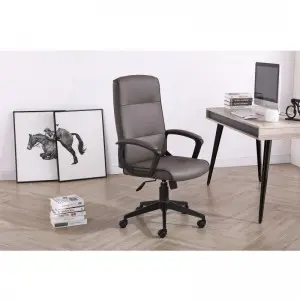In the 1850s, the seats were made of solid wood and rattan products; in the 1820s, soft bags, polyester fabrics, and lamination technologies were added; in the 1950s, the prototype of modern office chairs began to appear, with obvious separation of aluminum alloy brackets and seat backs, and obvious armrest support features. In the later period, the furniture designed by the famous furniture designers EAMES and his wife appeared with the design of all-aluminum alloy brackets. They abandoned the support of sponges, which made the seats lose their rebound function, added a screw-type lifting structure, and the appearance of the seats combined with architectural design.
In the 1870s, the frame of the office chair was basically finalized, mainly including functional elements such as armrests, five-star feet, mechanisms, waist and back support, and lifting and adjustment. In the mid-term, the Swiss brand virta proposed the concept of independent waist support and pioneered the technology that sponges can be directly foamed into the fabric itself. From then on, the technology of shaping sponges began to be applied. In the 1880s, the German company WILKHAN was the first to develop a chassis mechanism with adjustable functions, and also proposed the concept of active separation of seat and back. At the same time, the American Herman Miller Company proposed a four-point linkage chassis activity mechanism, which is also the predecessor of the chassis activity principle of the classic AERON CHAIR chair in the future; at the same time, the back also innovatively uses the design of elastic materials.
In the mid-term period, Herman Miller Company proposed a new set of concepts, namely the support of the mesh seat, each seat area can be adjusted, and the mechanism characteristics have been completely upgraded on the basis of the old products, abandoning the original spring mechanism and adopting a new rubber damping mechanism. Since the beginning of the 20th century, the design of office chairs has mainly focused on three points: 1. Appearance 2. Human comfort (adjustable fit of each part) 3. Chassis linkage mechanism (new type of activity linkage method).
In 2009, Herman Miller Company created a full skeleton support chair, which should be the most comfortable office chair in the world. EMBODY separates separate blocks and can be adapted to linkage; at the same time, Germany’s WILKHAN proposed the concept of swinging, and the back and seat cushion can be independently swung through the chassis structure. In 2014, Steelcase launched a fully adjustable armrest functional chair to meet the needs of modern mobile office and mobile office.
Post time: Sep-30-2024
